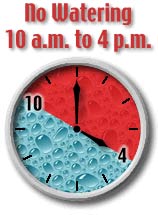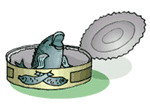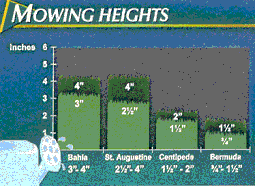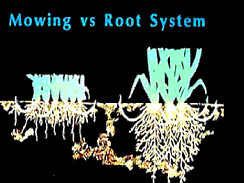Home >>> Water >> Lawncare & irrigation
Lawncare & irrigation
Understanding your lawn’s environmental needs and tailoring lawn care practices to suit local conditions allows for a healthy, environmentally-friendly lawn. Design your yard so it thrives only on rainwater.
 For
a complete guide to designing a Florida yard, checkout Florida
Yards and Neighborhoods.
For
a complete guide to designing a Florida yard, checkout Florida
Yards and Neighborhoods.
Here are a few tips to get you started:
Mulch your garden and landscape beds - mulch helps keep the soil moist and reduces erosion and weeds. Avoid piling mulch against plant stems and tree trunks to prevent rot.
Unsure how much mulch is needed? Check here
to find out.

Water the lawn at the right time - watering in the early morning or late evening when temperatures and wind speeds are the lowest will reduce water loss through evaporation. Don't water between 10:00 am and 4:00 pm.
Setting your timers - to keep your yard healthy with just enough water, it is important to set your timer with the correct watering schedule. A suggested watering schedule is 2 days a week (such as Monday and Thursday) with an irrigation run time of:
|
|
Depending on rainfall, these watering times should be adequate for your lawn and landscaped plants. Plus, you save about 10-20 % on your water bill with this schedule. However, keep a close eye for signs of excessive wilting if rainfall is not typical. The amount of watering can vary by the types of plants you have in your yard. If it rains every 3 to 4 days from June to September, you can turn your irrigation system off completely.
Position sprinklers properly - make sure the water lands on your plants and grass and not on paved areas.
 Lawns
only need about ¾ inch of water at a time. Place tuna cans or measuring
cups around the yard and measure the water collected in half an hour.
Spread several cans/cups around the yard to measure even distribution.
Lawns
only need about ¾ inch of water at a time. Place tuna cans or measuring
cups around the yard and measure the water collected in half an hour.
Spread several cans/cups around the yard to measure even distribution.
Use micro-irrigation hoses - these hoses can lay above ground or slightly buried and allow for water to seep through to a plant’s roots.
Make the most out of rainwater - turn downspouts from rain gutters towards areas with planting. Rainwater can also be collected and stored in a rain barrel for dry spells.
Mow your grass to the right height - the higher the grass, the more extensive the root system becomes.
Recommended mowing heights and root system:



